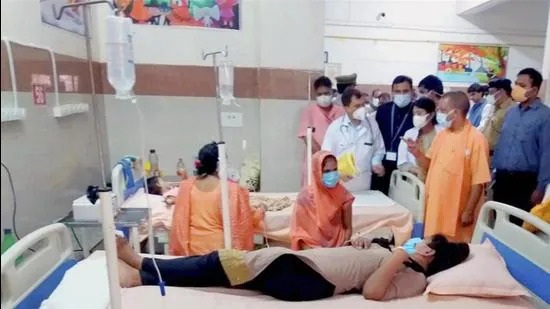
Spread of ‘mystery disease’ in UP's Firozabad forces residents to flee

The “mystery fever” outbreak in Firozabad district of Uttar Pradesh since mid of August has rattled the district administration, which is struggling to control the spread of the disease as well as the fear in the minds of locals.
The residents of Nagla Amaan and Nagla Mavasi — two of Firozabad district’s 152 villages — are in terror of the “mystery fever” with the toll reaching double-digit till date. Many of residents have either left their respective villages or have sent their children away, since the disease is believed to be inflicting maximum damage on those below the age of 10, reported The Print.
About 80 per cent of the cases have been found among children, but local media reports suggest the number is equally high among adults with over 200 children and adults having died because of the infections so far. An India Today report claims that more than 100 have died of the disease since August in Firozabad and neighbouring Mathura districts.
Firozabad Chief Medical Officer (CMO) Dinesh Premi said that dengue, malaria, viral fever, scrub typhus and leptospirosis make up the “mystery fever” outbreak that has been wreaking havoc in the district for over a month now.
A few reports have also been reported from Kanpur, Prayagraj and Ghaziabad districts of UP. Similar cases were found in Delhi, Bihar, Haryana, Madhya Pradesh and West Bengal, but no deaths have been reported.
Faced with a new health crisis even as the COVID second wave showed signs of settling down, the UP health administration was in a denial mode in the early weeks of September. “Most of the deaths in Firozabad, particularly those in recent days, were because of dengue. The reason for deaths in the early part is not yet clear. Patients are responding to treatment for dengue,” Dr. A.K. Singh, additional director (Health) at Agra, said on September 4.
CMO Premi confirmed that dengue is the main killer. He said 3,593 samples have tested positive for the mosquito-borne disease so far. The district reported 61 cases of malaria, 51 of scrub typhus and 23 of leptospirosis. The death toll in the district, till the middle of September, hovered around 50 deaths.
Also read: Have you had side effects after being jabbed? Most did not, says survey
Malaria is caused by the bite of female anopheles mosquitoes while scrub typhus and leptospirosis are bacterial infections spread through mites and urine of animals, respectively.
Residents blame the administration for poor hygiene which has escalated the health crisis. However, the district health machinery claimed that improper water storage by people has allowed mosquitoes to thrive.
On their part, doctors have been warning people against allowing water to stagnate, especially in water cooler tanks, the favourite breeding ground for Dengue-causing mosquitoes.
Dr. Abhishek Shukla, secretary-general, Association of International Doctors, said, “Even a spoonful of stagnant water is enough for mosquito breeding. Water even in flowerpots should be changed every day.”
“Most of the fevers today are viral whether influenza or dengue. These fevers make you feel very weak and lethargic. Patients suffer from bodyaches. These fevers need only symptomatic treatment and a good hydration status,” Dr. Anamika Dubey, Senior Consultant, General Pediatrics, Madhukar Rainbow Children’s Hospital, Delhi, told India Today.

